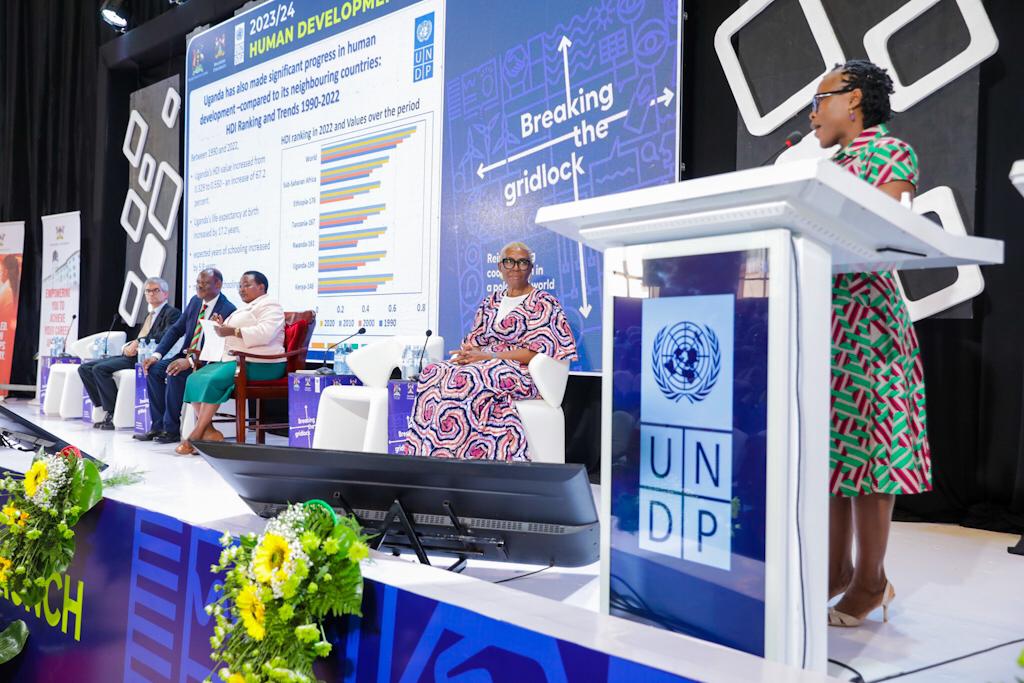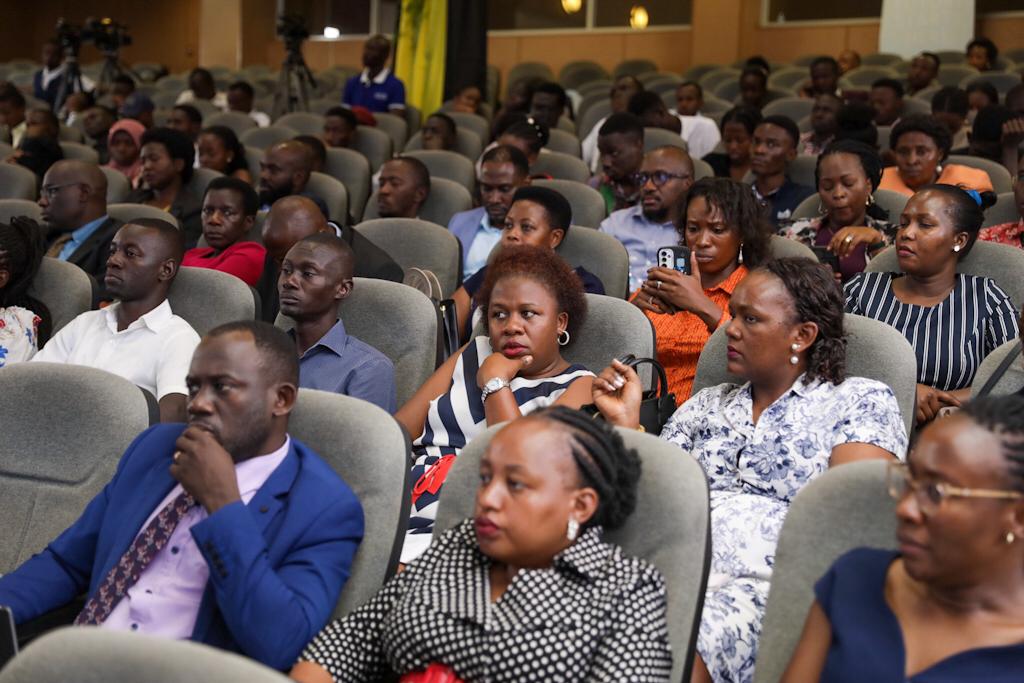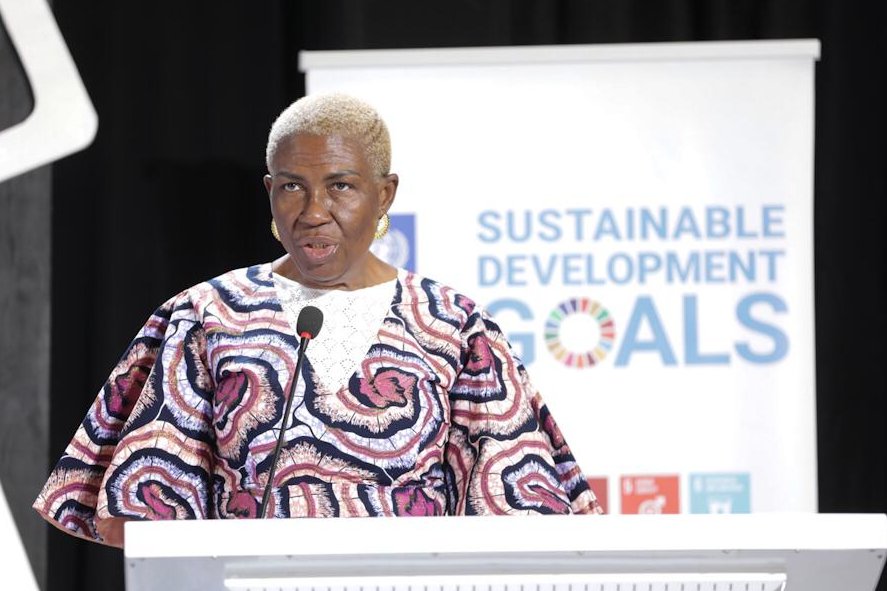Uganda has made its debut entry into the category of ‘medium human development,’ as revealed by the latest Human Development Report (HDR) for the year 2024.
This was revealed by the UN Country Coordinator, Ms Susan Namondo on Wednesday during the launch of the HDR 2024 at Makerere University.

Ms Susan Namondo, the UN Resident Coordinator addressing participants at the launch
The elevation of Uganda’s status to ‘medium human development’ marks a momentous leap forward in the nation’s ongoing journey towards prosperity and well-being. Released by the United Nations Development Programme (UNDP), the HDR serves as a comprehensive barometer of human progress, measuring key indicators such as education, healthcare, and income levels.
In her remarks, Ms Susan urged the country to invest more in human capital and health.
“Given the implications of global challenges, Uganda needs to invest more in human capital, social safety, agriculture and health including mental health,” she said.
For the first time in its history, Uganda has surpassed the threshold required to attain ‘medium human development’ status, reflecting tangible improvements across various facets of human well-being. This remarkable achievement underscores the concerted efforts and strategic initiatives undertaken by the Ugandan government and its partners to uplift the living standards of its populace.

A cross section of participants
Uganda’s Premier Robina Nabbanja hailed the achievement saying, “Today is a testament to our collective commitment in shaping a better future for Uganda and beyond. Let us draw inspiration from the progress we have made as a country and remain firm in our commitment to achieve the SDGs.”
The PM also asked all stakeholders, including government MDAs, Development Partners, Civil Society, Academia and the Private Sector, to work together to address the challenges outlined in the Report and facilitate further progress.
Key factors contributing to Uganda’s ascension to the ‘medium human development’ category include advancements in education, with increased enrollment rates and enhanced access to quality schooling for children across the country. Moreover, strides in healthcare, characterized by improved access to essential services and initiatives aimed at combating prevalent diseases, have played a pivotal role in bolstering Uganda’s human development index.
Medium Human Development refers to a classification based on the Human Development Index (HDI), which assesses a country’s achievements in various dimensions of human development, including education, health, and income. Countries with an HDI ranging from 0.550 to 0.699 are categorized as having medium human development. This classification primarily focuses on the well-being and capabilities of individuals within a society.
According to the report, Uganda’s HDI value for 2022 is 0.550 which put the country in the medium human development positioning it at 159 out of 193 countries.
In the year 2021-22, Uganda had an HDI of 0.530 and stood at 166 out of 193 countries. This means the country has moved 5-7 places according to the report.

UNDP Resident Representative Nwanne Vwede-Obahor
According to the cutoff points provided:
- HDI of less than 0.550 corresponds to low human development.
- HDI ranging from 0.550 to 0.699 indicates medium human development.
- HDI ranging from 0.700 to 0.799 reflects high human development.
- HDI of 0.800 or greater signifies very high human development.
Middle-income status, on the other hand, typically refers to a country’s economic classification based on its gross national income (GNI) per capita. The World Bank classifies countries into different income groups, with middle-income countries falling between low-income and high-income countries. These countries can be further divided into lower-middle-income and upper-middle-income categories based on specific income thresholds. Middle-income status primarily reflects a country’s economic prosperity and capacity to generate wealth.